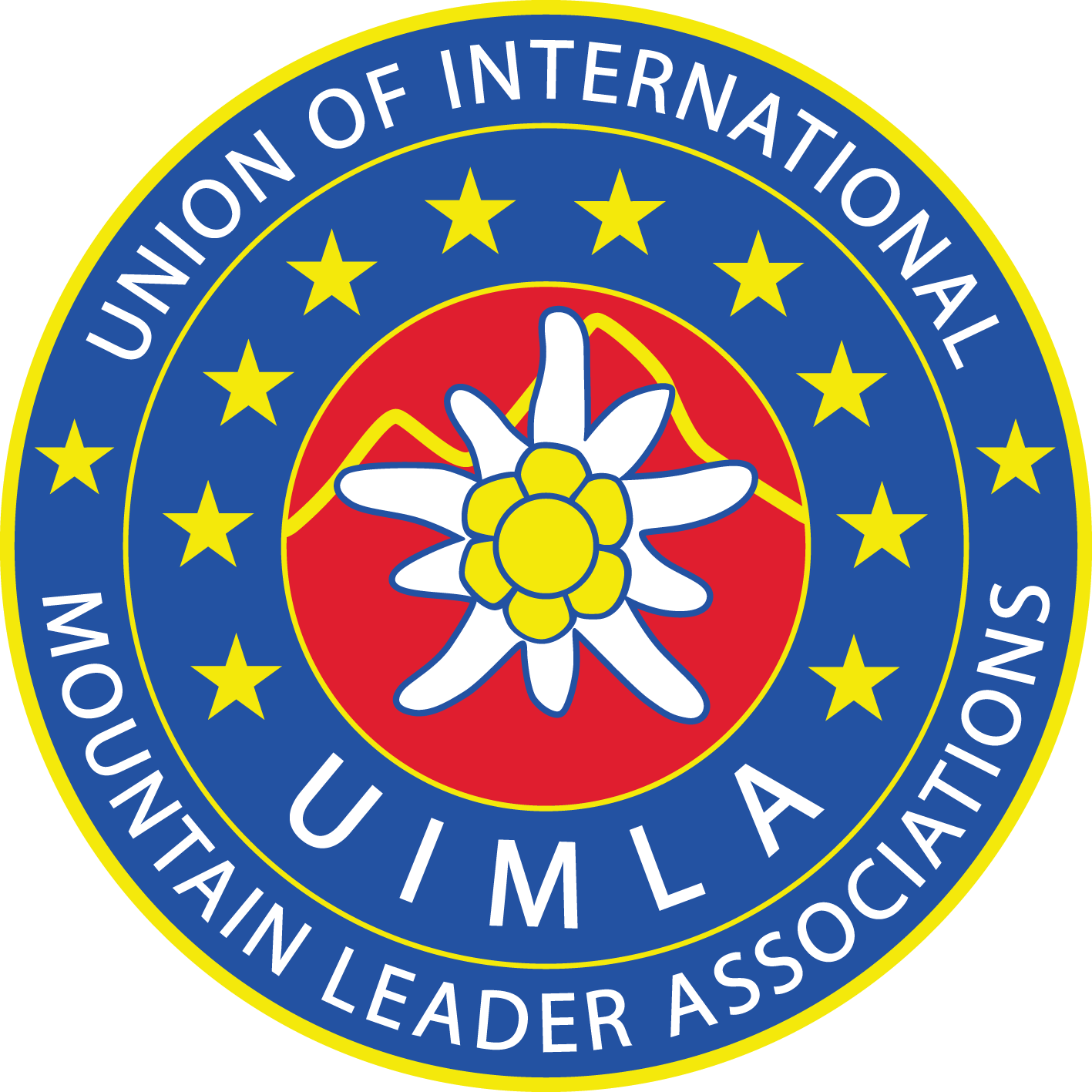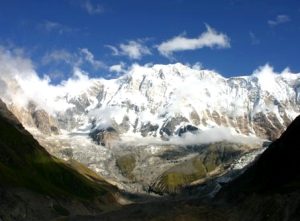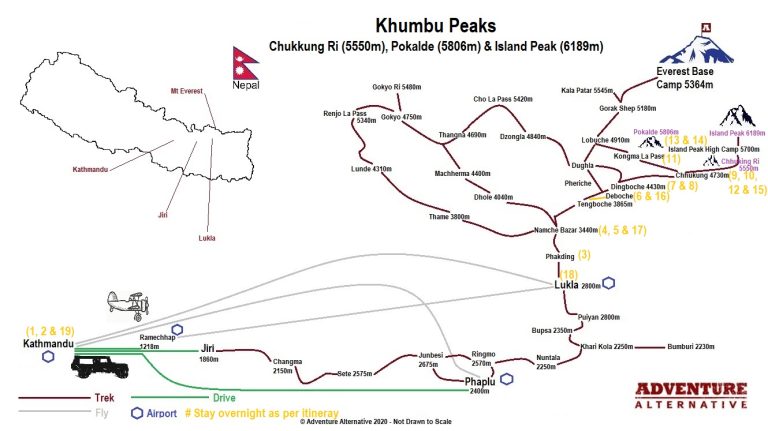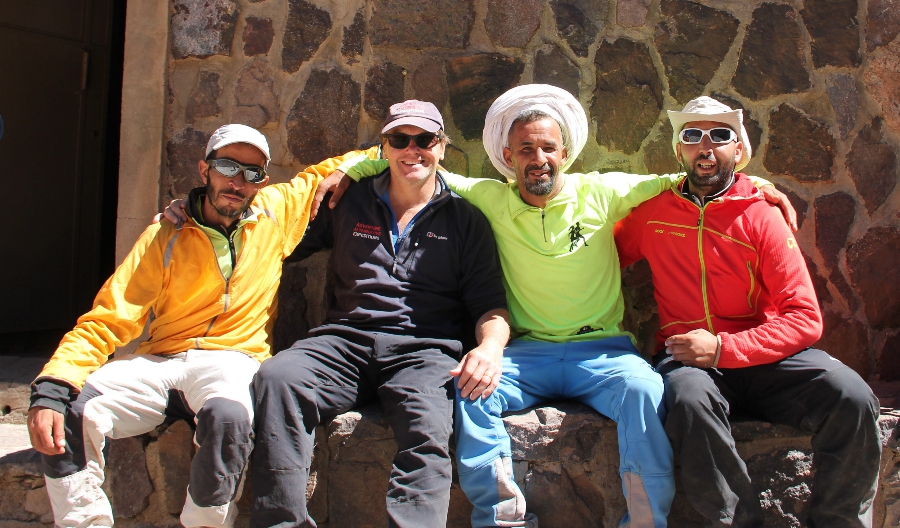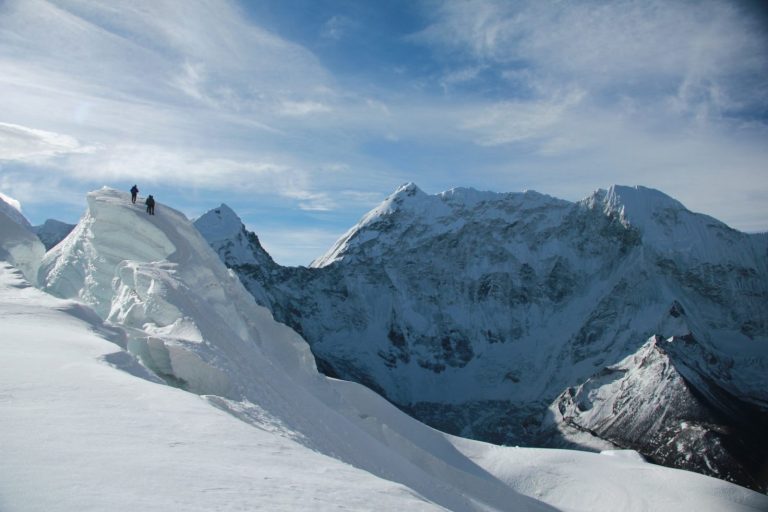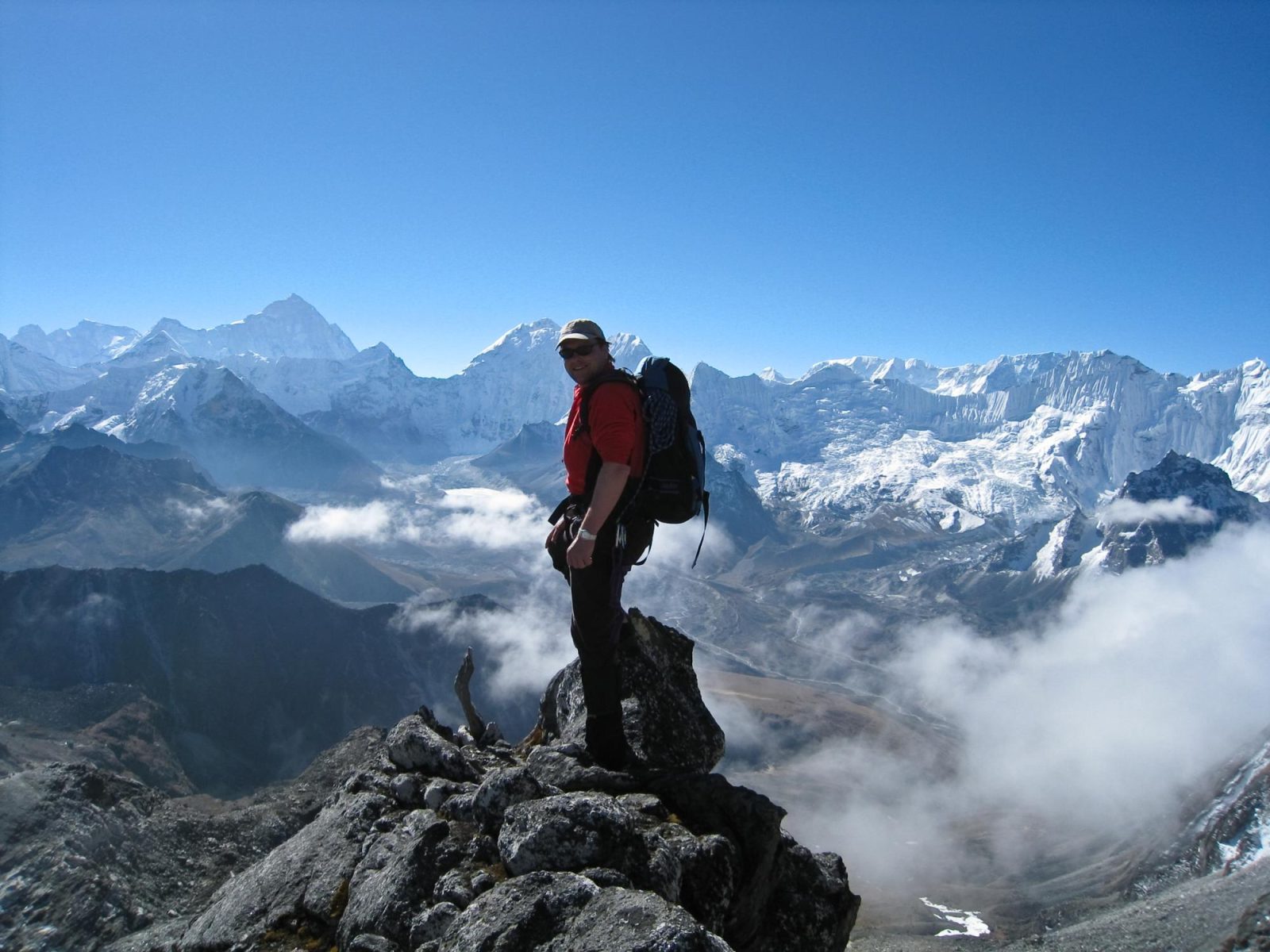
Khumbu Peaks - Chukkung Ri, Pokalde, Island Peak
This is a superb expedition to enter the world of climbing in the high Himalaya with three mountain ascents of increasing altitude – Chukkung Ri (5550m), Pokalde 5806m and Island Peak at 6189m.
Overview
There is also a visit to the Kongma La pass which has excellent views over the high Khumbu glacier and towards Everest Base Camp. If you want to advance from trekking and tackle some peaks in the Himalayas then this is a fantastic adventure for you and combines instruction of the skills needed and plenty of time to practise them as you gradually gain altitude and challenge difficulty throughout the itinerary.
If you’d prefer a more challenging trek, without going over 6000m, or something without the more technical challenge of Island Peak, then have a look at our Three Passes and Three Peaks trip.
What Our Adventurers Think:
On behalf of Derek and I, we just wanted to drop you a short note to say an incredible thank you for our trip to Nepal. It is slightly surreal being back in the office this morning after seeing some of the stunning scenery in Nepal, not to mention the effort involved in procuring said scenery !! We also would just like to say a special note of thanks both to Jangbu and the porter he arranged, Bikas. Jangbu’s combination of being not just a fantastic guide but also a thoroughly decent/likeable bloke added massively to the overall experience (not sure he fully understood my Glaswegian accent at all times mind you). Bikas ability to never stop smiling lugging 25kg up and down hills will also live long in the memory. Overall we could not have been happier with the pair of them. If we recommend to friends or return again ourselves you will certainly be our first port of call. Thanks and regards, Ricky
The Khumbu Peaks - Chukkung Ri, Pokalse, Island Peak Itinerary
The Khumu Peaks trip is a minimum 21 days when you include days in Kathmandu and has 17 days on trek. We do recommend allowing extra time for potential flight delays getting into and out of the mountains.
The gradual ascent up the Khumbu valley allows for excellent acclimatisation to initially climb Chukhung Ri for one of the great views of the south wall of Lhotse and then the Kongma La pass with it’s views over the Khumbu Glacier; we then move on to Pokalde with its panoramic view over the great divide in the Khumbu valley and all are lovely objectives on their own with breathtaking views.
Island Peak is the final highlight of the trip, a classic 6000m peak which was climbed by Edmund Hillary and Sherpa Tenzing back in 1953 as their training peak for Everest. In fact the route you climb is exactly the same as what they did. Island Peak is technically more demanding than the other two but you will be well acclimatised and mountain fit by this time.
During the trip, you will learn and use many skills in safe travel on mountains at high altitude including glacier travel, scrambling and moving on mixed snow and ice terrain. Good alpine skills are a requirement for this trip as the summit day on Island Peak does involve crossing a crevassed glacier using a climbing rope, negotiating some ladders across crevasses, using a jumar to ascend a fixed line and then a descender to come back down again (there is no top rope on the abseil) and negotiating a narrow exposed ridge to the summit.
Arrive into Kathmandu and transfer to hotel. Depending on your arrival time you can relax or go sight-seeing around Kathmandu.
Rest day in town. Possible drive to Ramechhap** – see ‘Lukla Flight’ details below.
Flight to Lukla, and walk downhill to Phakding or Jorsale along the edge of the Dudh Kosi River. Easy, busy path, surrounded by forest.
Uphill to Namche Bazaar which is the Sherpa capital in the heart of the Khumbu region. Initially follow the valley to Monjo where you enter the National Park, then cross the river a few times and start a long unrelenting path uphill, with one spectacular bridge spanning a deep gorge. Leave the coniferous forest behind, and arrive at a huge natural amphitheatre with the houses spread around the sides.
This is an acclimatisation day which you can rest or enjoy the sights and sounds of Namche, the major trading centre of the Khumbu. Nowadays there are also many equipment shops, internet facilities, banks, post office, cafes, bars, lodges and hire shops.
Walk to Deboche which is near the famous Thyangboche Monastery. The path out of Namche is initially steep and then opens out into a high valley, passing through villages like Pangboche before negotiating two steep hills. After this it is a short walk to the beautiful rhododendron glade where you will find the lodge.
A gradual gradient up to Dingboche. The path skirts the side of the valley with the river far below on your right and passing beneath the spectacular Ama Dablam. The village sits on the confluence of two valleys.
This is another rest and acclimatisation day. In the neighbouring village of Pheriche it is important to visit the Himalayan Rescue Association to listen to the daily lecture on high altitude health, and get a check from the medical staff if required.
Today we have a relatively easy day as we continue on up the Imja valley on easy ground to the village of Chukhung (4730m). Here you can check any rental gear you will need.
Early start to climb the nearby peak of Chhukhung Ri, 5550m. It is a staight forward walk but the increase in altitude will soon start to tell. From the top look down to the four different glaciers that all approach our start at Chukhung and marvel at the giant south face of Nuptse.
Walk to Pokalde base camp, next to a small lake on this high plateau. Bring sleeping bag and mat and climbing gear for Pokalde.
Pokalde summit day via the Kongma La where we will be able to peer down the steep gully to the Khumbu glacier. We then follow the ridge line up to the summit. Descend back to Chukkung.
Trek to Island Peak Base Camp (Pareshaya Gyab), a small area in a narrow valley alongside the lateral moraine of the Imja Khola lake. We will have a refresher/ training on the use of fixed lines and personal movement on ice and plan our clothing and equipment for our ascent. Camping.
Rest and training day at Island Peak Base Camp
Summit day. Descend back to Chukkung.
2nd summit day and descend to either Chukkung or Deboche
Trek to Namche Bazaar optional via Khumjung.
Trek to Lukla
Fly to Kathmandu / Ramechhap
Flight delay day
International flight home
The Lukla flights fly-by-sight, so if there is bad weather there can be delays, which occurs in about 30% of all trips with an average delay being 24 hours. We can be flexible and adapt the itinerary to catch up on lost days, and we include a weather day in the itinerary, but if the planes can’t fly then there is little to do except wait.
Occasionally the planes can’t fly but helicopters can; if you prefer this option, and there is group consensus, we can organise this but there would be a supplemental charge which is normally around $500 per person one way. Please look at our Delayed Flight page so you are fully informed and do consider booking your holiday for a day or so longer just in case you do end up with a delay.
Over recent years there has been a change, sometimes with little notice, regarding the airport you fly from to reach / return from Lukla. Traditionally, and still occasionally, you fly from Kathmandu airport, however there are now (mostly) regular seasonal changes that have moved the flight to depart / return from Manthali Airport, which is in a place called Ramechhap. If your flight does depart from Ramechhap we will let you know in advance, as far as possible, as this will impact your itinerary slightly, and there will be additional costs as the airport is a four hour drive from Kathmandu.
We prefer to make this journey on your rest and briefing day (day 2 of the itinerary). Some make this journey at 2am on the day you fly up to Lukla, but this can lead to you being very tired and a very long day. We prefer to drive on the afternoon of day 2 of your itinerary, so that you can relax on the morning of day 2, then enjoy the drive in daylight through the beautiful countryside and communities that you pass en route. This means you will arrive at a decent time to have dinner and get a good nights sleep before you fly up the next morning and start trekking.
If this applies to you then there are additional costs for 1) return road transport to / from Ramechhap and 2) accommodation. You will be accompanied and travel with your trek guide. You will of course save some money with one less night in your Kathmandu hotel. These costs are paid in country to our co-ordinator and they vary depending on the size of the group / vehicle required. As an estimate they can range from £70pp to £140pp for a return land journey and an overnight stay in a local hotel for you and your guide. We will book and manage all of this for you.
Ready for an Adventure of a Lifetime?
Choose a scheduled date or contact us to set up private dates or a bespoke itinerary. The minimum deposit is £100.00 and the balance is due four weeks before travel.
Fixed Itineraries
| Start Date | End Date | Days | Price (per person) | |
|---|---|---|---|---|
| 26/04/2025 | 16/05/2025 | 21 | £2,975.00 | Book Now |
| 15/11/2025 | 05/12/2025 | 21 | £2,975.00 | Book Now |
| 25/04/2026 | 15/05/2026 | 21 | £2,975.00 | Book Now |
| 14/11/2026 | 04/12/2026 | 21 | £2,975.00 | Book Now |
Private Itineraries
Our Khumbu Peaks Experts
Mohamed Ali: guide on Toubkal. Good English speaking, very experienced climber with official mountain guide certification and first aid.
Idris and Said: both speak good English and have been guiding with Adventure Alternative since 2015. Said has the best English and is a certified guide with first aid.
Khumbu Three Peaks Cost £2,975.00 per Person
Includes
- Airport transfers (to / from Kathmandu airport to Kathmandu, for international & Lukla flights)
- Internal flights or land transport to the start of the trek
- Accommodation in lodges/tea houses during trek and in tents at the base camps, including all meals
- Sagamartha National Park Fees (VDC fees)
- Climbing permits
- Sherpa climbing guides (English speaking, trained in first aid and mountain guiding)
- Porters (1 per member, carries about 15kgs)
- Staff insurance
- Group climbing and camping gear such as tents and ropes.
EXCLUDES
- International flight to Kathmandu
- Accommodation in Kathmandu – we can book this for you. See the Extras tab and also Click here for details
- Transfers to / from Ramechhap airport (see ‘Lukla Flights’ below)
- Meals and drinks in Kathmandu
- Personal costs like drinks, laundry, hot showers, boiled water and hot drinks in the lodges
- Personal travel insurance
- Visa to enter Nepal
- Summit bonus for guide (60,000 rupees per guide which is paid collectively by the whole group)
- Tips for the porters and cook used at base camp (~£80.00)
Please Note:
Luka Flights – Over recent years there has been a change, sometimes with little notice, of which airport you fly from to reach / return from Lukla. Traditionally, and still occasionally, you fly from Kathmandu airport, however there are now (mostly) regular seasonal changes that have moved the flight to depart / return from Manthali Airport, which is in a place called Ramechhap. If your flight does depart from Ramechhap we will let you know in advance, as far as possible, as this will impact your itinerary slightly and there will be additional costs as the airport is a four hour drive from Kathmandu.
We prefer to make this journey on your rest and briefing day. Some make this journey at 2am on the day you fly up to Lukla, but this can lead to you being very tired and a very long day. We prefer to drive on the afternoon of day 2 of your itinerary, so that you can relax on the morning of day 2, then enjoy the drive in daylight and get to see the beautiful countryside and communities that you pass through. Then arrive at a decent time to get a good nights sleep before you fly up the next day and start trekking.
If this applies to you then there are additional costs for 1) return transport to Ramechhap and 2) accommodation. You will be accompanied and travel with your trek guide. You will of course save some money with one less night in your Kathmandu hotel. The travel costs are paid in country to our co-ordinator and they vary depending on the size of the group / vehicle required. As an estimate they can range from £70pp to £140pp for a return land journey and an overnight stay in a local hotel for you and your guide. We will book and manage all of this for you.
Hotels – We don’t include your hotel in Kathmandu as there is such a wide range of choice and styles for all budgets. We offer some recommendations which you can see on the Extras tab and can confirm during your booking process or after. Hotels will usually transfer you from the airport, but if not we’re happy to do so.
Meals on Trek – We include three meals per day whilst on trek. It is a common practise on cheaper treks to have a food kitty which would normally add £400 – £500 per person to the cost of a trek, but we provide all meals within the trip price.
Payments – A deposit of £100.00 is required on booking to secure your place and we ask that the remaining balance (trip price minus the deposit) is paid in full 6 weeks prior to your departure. When you book with us you’re given your own secure online account which you can access 24/7. Through this account you can edit your booking, add flight, health, insurance and dietary details and also make interim payments. We make payments as flexible as possible and you can choose, if you wish, to pay a bit off your trip fee whenever it suits you.
Value for money – Our prices are competitive and good value, and we offer quality, service, security and an ethical stance on tourism in a developing country. We don’t want to be so expensive to run fewer trips and have our staff idle, but on the other hand we believe that running cheap trips that promote the practice of skimming budgets would result in the porters getting next to nothing, which is something we cannot consider.
Acclimatisation – Our treks allow a good time to acclimatise and as a mountain guiding outfit we always want to ensure the trek is safe. Reducing the number of days may make the price cheaper but the chances of safely reaching base camp also greatly reduce. We follow established mountaineering principles of height gain on all treks to altitude.
Travel Insurance – As soon as you book you should purchase a policy which covers trekking to 5500m this will cover you should any unexpected events force you to cancel. Your policy should also include helicopter rescue in the event of an evacuation.
Flight Delays in Lukla
The mountain flight in and out of Lukla which is where most treks begin and end in the Khumbu (Everest) region can be delayed due to bad weather. Normally it is for about 24 hours but it can be longer. We recommend you allow some time in Kathmandu after the specified day of the internal flight just in case. There is more information about Himalayan flight delays.
Some people choose to cancel the internal flight and book a helicopter which can fly below the cloud level and is not so determined by the weather. This is possible but there are no fixed prices for a seat on the helicopter. There are now around 12 helicopter companies operating and we can check them all for you.
For a one way place on the helicopter to Lukla can cost around $500.00 minimum. The cancelled portion of your aeroplane flight can be refunded and used to offset this figure, which is about $170.00 for a one way sector, so there would be a balance to pay for the helicopter. You can use your credit card to cover off this additional expenditure.
Unfortunately there is nothing we can do if the flight is delayed. Sometimes you can end up waiting in the airport from early hours to get the ‘green light’ to go, only to find yourself back in the hotel by mid morning. People do get very frustrated because it can impact on the trekking itinerary. A helicopter is one option, or else to wait until the weather improves. However, if it does not then very quickly a queue of people at either end can build up, and it is always hard to get priority for when the weather clears. The airline companies put as many planes on as possible to clear the backlog.
We try to assist as best we can, but it’s important to accept that the route has this potential delay and also that it’s advisable to book the international flight home a little later in case the delay affects your return ticket.
There is another option which is to drive to Paphlu and then take a jeep on the new road as far as it will go and then walk to Lukla. This option takes more days – two in total each way currently – and there is a saving but only of about $70 compared to the flight.
Khumbu Peaks Kit List
- Large duffle bag or rucksack & liner
- 40 Ltr day pack
- Stuff sacks, waterproof, various sizes
- Expedition Jacket, primaloft or down
- Waterproof jacket and trousers, goretex or equivalent (softshell)
- Gaiters
- Trekking trousers and shorts, Tshirts, shirts
- Fleece or woollen tops
- Base layer tops and bottoms
- Thin socks and thick socks
- Warm hat, buff/balaclava, sunhat
- Liner gloves, warm gloves, mitts
- Sunglasses Cat 3 UV polaroid
- Mountaineering boots graded B1 or B2 to accommodate crampons
- Trekking boots/shoes and hut shoes
- 4 season sleeping bag (comfort temperature -15C) and compression sack
- Thermarest or sleeping mat for camping
- Walking poles
- Head torch & spare batteries
- 2 x 1 litre drinks bottles and covers
- Pee bottle (optional)
- 12 point crampons
- Mountaineering harness – preferably alpine harness
- Walking axe & leash (leash is optional but preferred)
- Climbing slings – at least 2 medium
- Screwgate/locking karabiners – at least two
- Ascender (jumar) – best to use the one with the big handle for easy manipulation
- Descender, normally a figure of eight
- Prussik loops – one is enough for emergency use on the fixed line
- Wash Kit and first aid, towel
Items Available for Rent in Nepal
Mountaineering Harness
Descender, ascender, karabiners and slings
Crampons
Walking Axe
Sleeping bag and mat
Down jacket
Mountaineering boots
Boots for the climb need to be of a type that will allow fitting of crampons. They also need to be warm and fitted well to your feet. For Island Peak you will need boots graded at least B1 for crampon use. If you are planning on doing more mountaineering in the future on higher or colder routes it may be worth investing in B2 hybrid or B3 rigid Plastic boots both of which will also be suitable for Island Peak. Full 8000m triple boots are not needed for this climb but could be used if you already have them.
Personal First Aid Kit Contents
Paracetamol
Ibuprofen
Antiseptic Wipes
Adhesive Plasters
Blister Plasters
Zinc Tape
Insect Repellent
Antihistamine tablets
Sunblock Cream
Water Purification Tablets
Loperamide tablets
Rehydration Sachets
Personal Medication as required:
eg. Anti-Malarials, Asthma Inhalers, Insulin, Epi-Pen etc
Lip Salve
Throat Lozenges
Latex gloves
Crepe Bandage
Hydrocortisone Cream
Prochlorperazine tablets (for sickness/nausea)
Ciprofloxacin tablets (general antibiotic; prescription required)
Acetazolamide tablets also known as Diamox (altitude prophylactic; prescription required)
Note: you must check with your GP for your personal suitability to all medicines and their possible side effects and interactions. Please inform us of the details of all regular medication that you intend to use though the course of your trip and any relevant allergies and medical history related to them. You also need to check the requirements and regulations of the airline and all countries visited in relation to medications. For example; laws governing transport of some pain control medication and the need keep insulin at a suitable temperature, ie not in the cargo hold.
Climbing Chukkung Ri
Chukkung Ri is a rocky peak, similar to Kala Pataar above the village of Chhukung in the Everest (Khumbu) Region of Nepal. It lies to the North of Chhukung and takes approximately 3-4 hours of lung busting effort.
Starting from the village it takes around 2 hours to climb to the saddle on good trails with cairns. Turn left at the saddle for an easy trail to the lower summit, and then traverse the ridge of loose screen and broken rock to the higher summit from where there are amazing views towards the Lhotse wall and across to Makalu and Ama Dablam.
It takes about two hours to go down from the main summit and bring at least 2L of water for the climb with snacks and good warm clothing as it can be very windy and dusty up there.
Climbing Pokalde Peak
This mountain is mostly rocky during the main trekking season but be prepared for some snow and patches of ice early in the morning. It’s a popular acclimatization peak for Island Peak and is impressive as a high point on the ridge across the valley and the view from the summit is spectacular with a vista that extends all the way down the Khumbu valley. An ice axe and crampons should be brought, as well as your harness, karabiners and slings.
Most people climb the north ridge but it is also possible to climb the South ridge which is graded PD. Both routes might require two pitches to be put in the last section to the top depending on the group and the ground conditions. The rock is a little loose at times and on the whole this is a rock scramble.
The more popular north ridge route is still a PD/PD+ and accessed from the Kongma La which has really great views directly down onto the Khumbu Glacier with the village of Lobuche directly across.
Climbing Island Peak
The small summit of this famous mountain provides some of the most spectacular scenery of the Himalayas in the Khumbu region. Seen from the summit, the giant peaks of Nuptse (7,879m), Lhotse (8,501m), Lhotse Middle Peak (8,410m) and Lhotse Shar (8,383m) make a huge semi-circle to the north. Makalu (8475m) is visible to the east, with Baruntse and Ama Dablam to the south completing a truly remarkable 360 panorama.
From Dingboche, the mountain is seen as a pyramid of ice and rock, dwarfed by the 8000m Lhotse behind. The mountain itself is the extension of the South Ridge of Lhotse Shar separated by a col and it was named by Eric Shipton because of its resemblance to an island in a sea of ice.
The route follows the Chukkung Valley to Base Camp, from which the summit is a challenging 6 to 9 hour climb depending on conditions. The route follows a circuitous rocky path in the dark to ‘crampon point’ after which you will be on a climbing rope and negotiating a heavily crevassed glacier with ladders used to cross some of them. The route comes to the base of a 300 metre headwall to the summit ridge which is fixed with a rope to clip onto using a jumar and a safety karabiner (‘cow’s tail’ set up). Once atop the ridge a further 200 metres along the narrow ridge using a fixed line to a small summit.
The descent is back the same way, and the headwall must be negotiated with a rappelling or descending device so it is important to feel competent with descending by yourself. There is no top rope for safety so we advise using a figure of eight that is easily managed. There are many anchor points on the fixed line so it is vital to double up with a safety karabiner on the ascent and the descent and to remember to place the safety karabiner above the anchor point before moving either the jumar or the descender device.
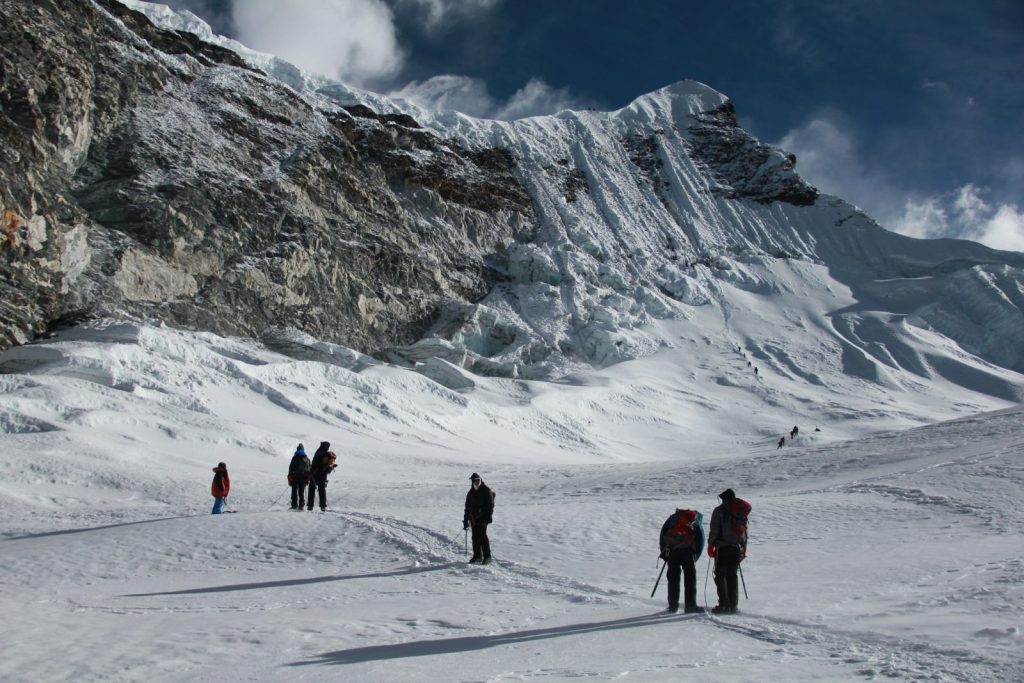
The Khumbu Peaks Terrain: Chukkung Ri, Pokalde, Island Peak
The initial trek is on a well trodden path all the way though this can be rocky and uneven in parts. Poles are useful but not necessary, and you can walk in hiking clothes and lightweight trekking boots or shoes. Sunny days can be up to 18 degrees but the temperature in the evening can drop to just below freezing. Lodges have heated central rooms and unheated bedrooms with beds, mattresses, pillows and blankets if you need them.
Above Namche Bazaar the terrain opens out into high U-shaped valleys carved out by the glaciers with the great mountains around. Windy and dusty and cold potentially, with snow and hail but equally hot sunny spells. The UV up here is strong and damaging so it’s important to look after your skin and eyes.
The ascents to Chukkung Ri and Kongma La are tiring at altitude but non-technical on rocky ground, the main danger being slipping on a loose rock and twisting an ankle or sliding on loose scree. Neither are on steep ground but the combination of altitude, the thin dry air and potentially cold weather does make everything challenging up here.
Pokalde is a rocky peak requiring some hands-on scrambling to the top. It is definitely quite precarious and steep towards the end and it’s important to bring along a rope for protection on the last two pitches. Bring a harness with karabiners and slings in case the leader needs to lead a pitch and set up a belay for others to follow. Sometimes there will be fresh snow and patches of ice so crampons and a walking axe are useful items to take on the summit day.
Once on Island Peak there will be steep scrambling on loose broken rock then climbing steep snow slopes and a narrow airy ridge to finish. You will need to use crampons and a walking axe. You will need to have experience of using the necessary equipment such as jumars, harnesses and descenders, but you will also have time to learn and practice these skills prior to climbing Island Peak. By this time you will also need to be competent at walking safely on a man line, clipping onto a fixed line and abseiling on a single line (without a top rope).
The main headwall on Island Peak is around 38 degrees which will feel quite steep and strenuous at that altitude. There is a fixed line here for you to clip in to for protection and there are anchors at every 10 or 20 metres. The summit ridge can feel exposed and you will need to compose yourself and walk carefully and deliberately.
Khumbu Three Peaks Altitude Profile
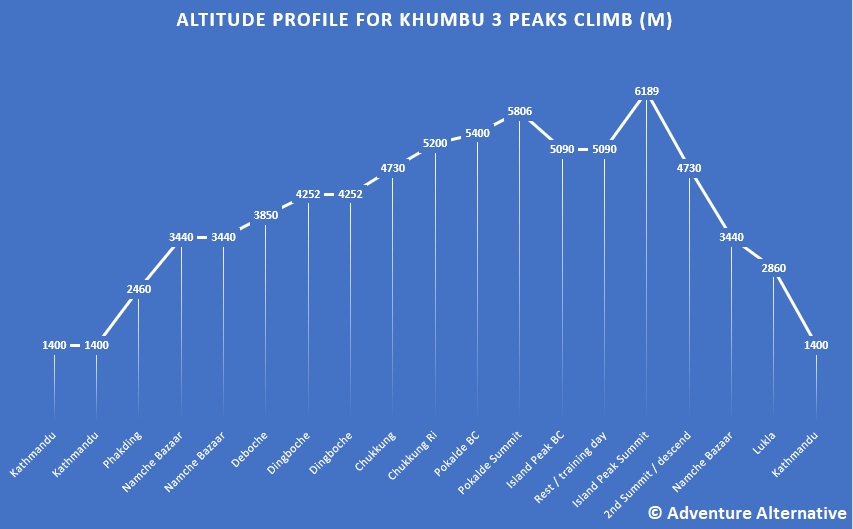
The Khumbu Peaks Accommodation: Chukkung Ri, Pokalde, Island Peak
Accommodation on the trek will be in comfortable lodges run by local families, unless people specify a preference for tents. Each lodge has a central communal area with stove, while the bedrooms are unheated with two beds and mattresses, blanket and pillows. You will need to bring a sleeping bag. The lodges generally have showers which are powered by gas and some use the infamous ‘drop’ toilets, though most now have flush systems now.
Food on the trek is very good quality, and a mixture of local Nepali / Sherpa food and western recipes. Burgers and chips are a common meal, as is dal bhat with rice. You will find everything from fresh pastries to beer, stir fries to deep fried Mars bars available in the lodges and shops a Nepal price guide can be found here. And there are many shops selling all types of drinks and snacks, sweets and chocolate. The biggest challenge will be avoiding all the unhealthy foods and sticking to a simple diet of rice and dal!
At Island Peak base camp we will be camping. We will be in mountain tents usually sleeping two persons per tent. Bring a 4 season sleeping bag and also a good quality sleeping mat. For lower down you may wish to use a sleeping bag liner to sleep in a open zipped 4 season bag, so that you don’t get too hot.
The porters will carry your main bag up to a maximum weight of 15 kgs and cater for all the group needs, you will also have your guide and climbing guide with you throughout to ensure you are safe and happy.
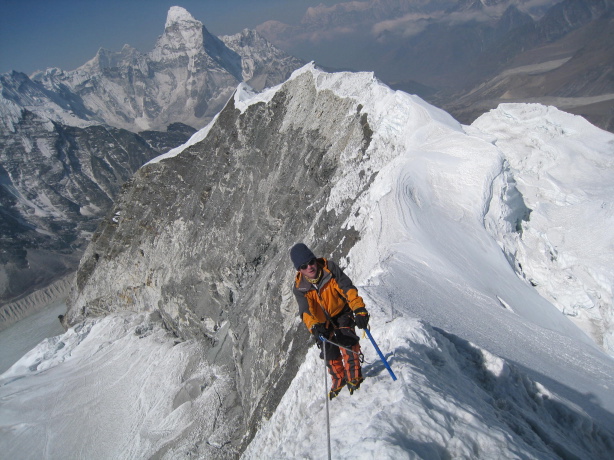
Experience Needed for the Khumbu Peaks: Chukkung Ri, Pokalde, Island Peak
Previous experience of trekking in high altitudes is required, so that you know how you acclimatise and if this is a suitable expedition for you. Basic mountaineering experience will be of particular benefit on this trip, especially using protection equipment and crampons safely. Knowing how to use a walking axe properly, scrambling confidently and efficiently, and knowing how to maximise your energy over multiple days will be a big advantage too. If you don’t have the technical knowledge prior to our final and most technically demanding climb of Island Peak, we do have plenty of time to teach and practise the skills that you’ll need.
We recommend that you embark on a good fitness programme at least 6 weeks prior to your trip, and one that builds up general stamina and leg muscle groups in the thighs and calves. There is nothing like hiking with a rucksack to train for this type of trip, so the best advice is to get out into the hills as often as you can. You are likely to carry about 5- 8 kilos in your day sack so this is a good weight to work with.
If you are going to be using the gym then use step machines which work on the thigh and calf muscles, and try to build your heart rate up to 50% above resting rate. Any cardiovascular activity is good, but remember that swimming will not train the correct muscle groups so it must be added to other exercises to be effective. Exercise groups like body pump, Pilates and aerobic are all excellent preparation for a trip like this, especially those which work on core strength, balance and stability.
The Khumbu Peaks Support Team: Chukkung Ri, Pokalde, Island Peak
From your first enquiry and in the build up to your trip you’ll have direct access to experienced and professional guides and climbers for any advice or questions. Then on arrival in Nepal you’ll meet Tsering, our operations manager in Kathmandu who organises all the staff, equipment, permits and hotel arrangements. He is also the main link between you and the UK office when you are in Nepal. He will talk to the Sherpa guides regularly on the trek / climbs when signal is available and he can make arrangements while you are on trek. You also have continued support from the main office in the UK. In the Khumbu region there is an opportunity to communicate since most lodges now have WiFi. We will always try our best to assist with any situation and of course we will provide you with all the advice and support you need prior to this trip. In addition:
- You will travel with our qualified, time proven, guides who not only lead trekking groups but are experienced in high altitude expeditions.
- Porters’ health and welfare is constantly monitored by local and UK trekking group leaders.
- All the staff in our UK office have been to Nepal and we are qualified mountain professionals so you can chat to people who understand what it’s like to go up for the first time, before you go.
- We provide insurance cover for all of our Sherpa guides and local staff in the event of an accident or need for repatriation.
- Preparation information and support is available to help you plan.
- We advise you to read our advice on altitude health and acclimatising safely.
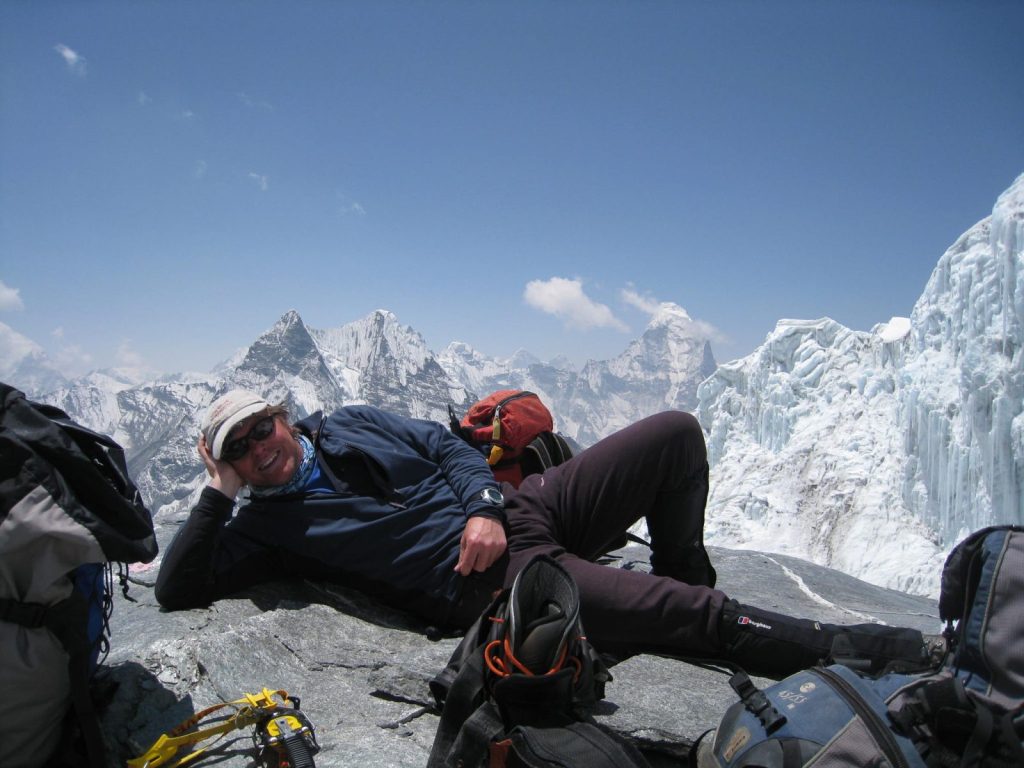
The Khumbu Peaks Emergency and Evacuation
Helicopter evacuations are the common way of dealing with an emergency in Nepal and there is a very established system for dealing with the logistics. It is obviously important to have travel insurance in place and to be clear on your destination and what you are doing to the insurance company. In the event of an emergency the initial job of moving a casualty will be the responsibility of the team itself and the guide and porters and anybody else nearby. The task will be to move the casualty to the nearest safe place and then to a point where an evacuation can be made. On a Himalayan peak this could be some distance and take some time. Bad weather is the most common reason for delaying helicopter assistance so it’s important to acknowledge that there is a requirement for self-sufficiency and self-management in the mountains.
Horses are commonly used for assisted descent and they normally charge around USD$150.00 per day which needs to be paid in cash. A helicopter evacuation can be organised through your insurance company but there will need to be some direct communication with the insurance company to open a case and explain the circumstances. This will require you to have your policy number, name and address and the date on which you paid for the insurance policy. We don’t normally carry a satellite phone because of the ubiquity of mobile phones now, but it may be necessary to walk some distance to reach a lodge where there is phone connection.
In the case of altitude sickness the best advice is not to take risks and descend. Further ascent can lead rapidly to the much more serious cerebral or pulmonary oedema which is incapacitating, so normally if you are feeling really bad then best to descend while you’re still mobile. There is plenty of literature on acclimatising and using the appropriate drugs but even with medication you should still descend.
Incidents are very rare and the Khumbu Peaks are in a well supported region of Nepal with the Himalayan Rescue Centre located in Pheriche a short distance below Chukkung.
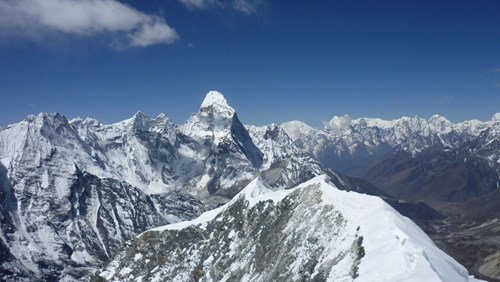
Do have a read of our various Blogs about treks in Nepal and also the ‘More Information’ section, both have tabs on this page and will answer every question you may have! We also have a lot of useful information on our Nepal Preparation page.
Key Information & Guides
General Nepal Information
Health and Safety Guides
Preparation & Kit Guides
Book Your Adventure of a Lifetime Now
Discover our trips to other Countries
Other Trips You May Enjoy
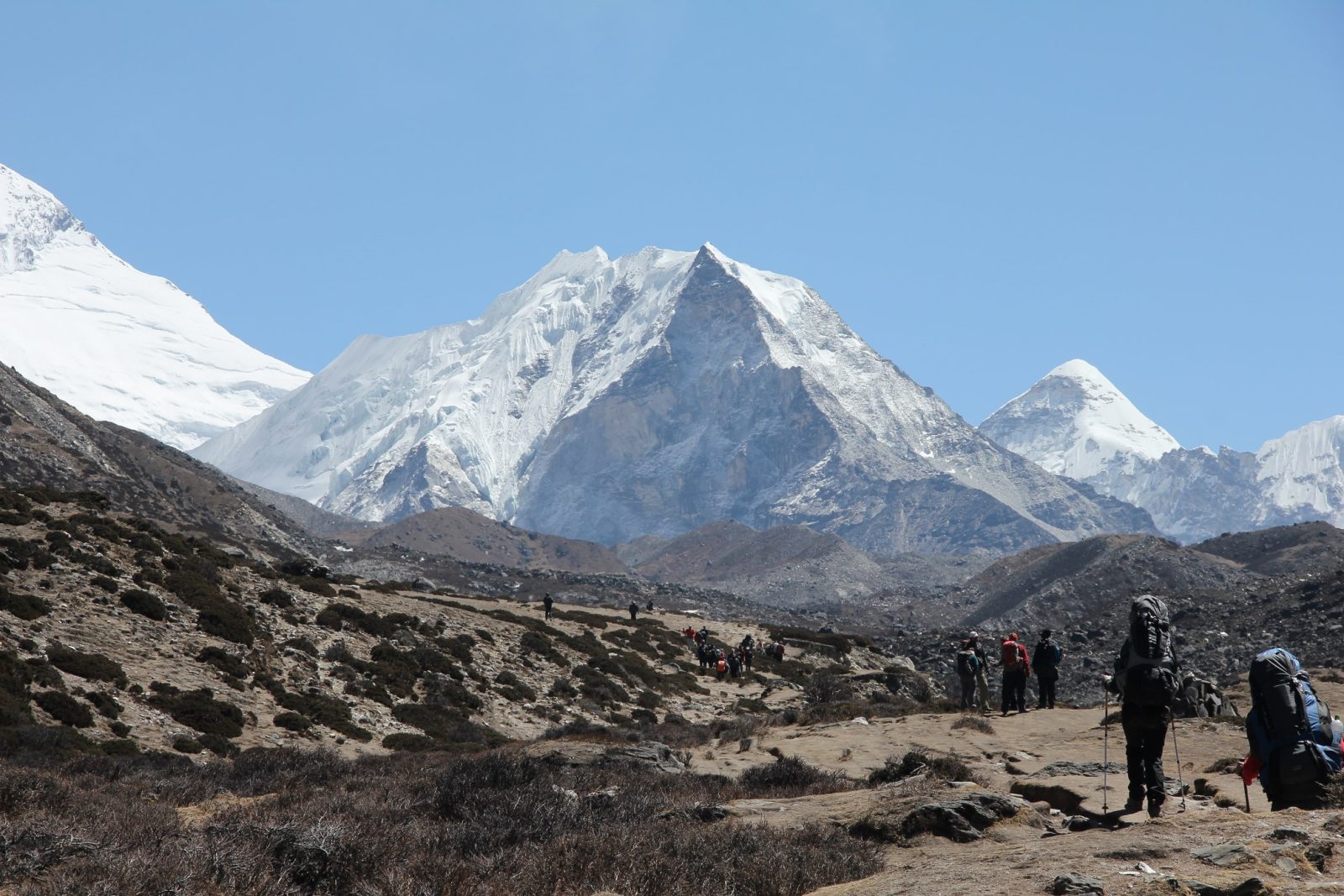
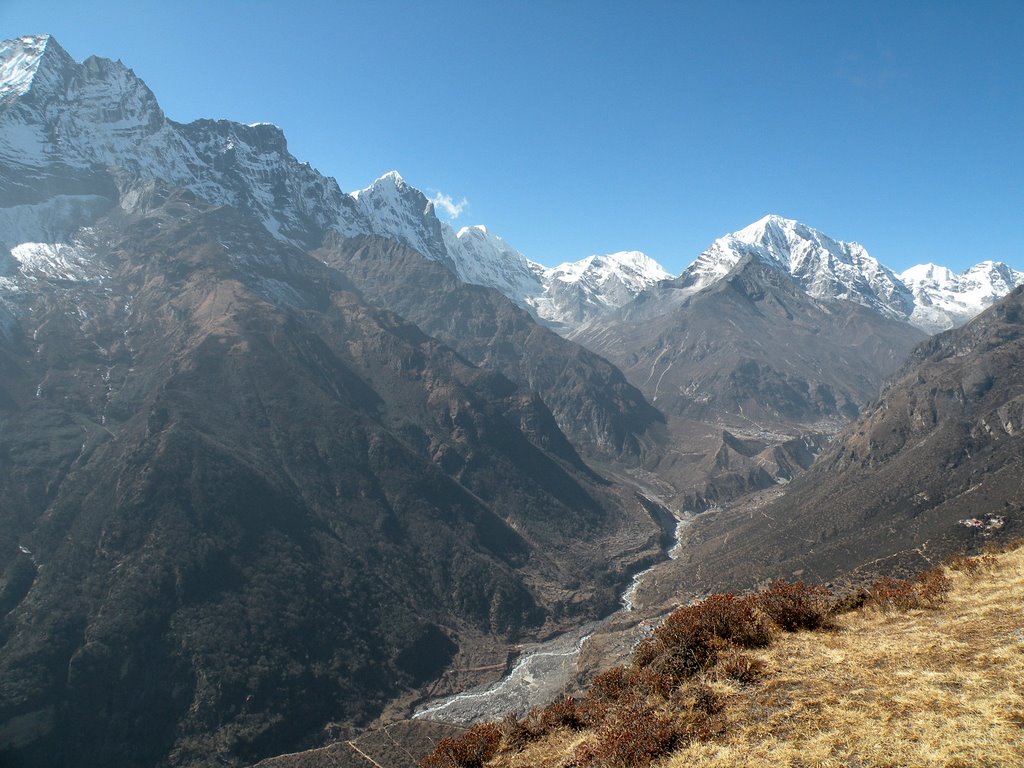
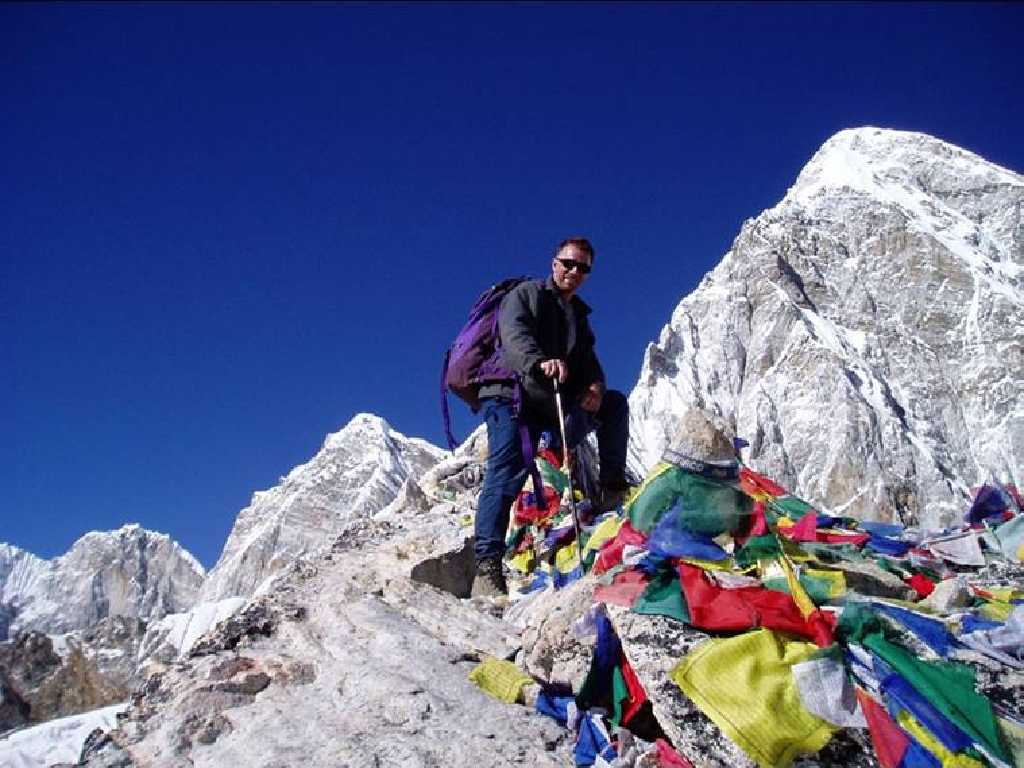
Our Nepal Posts
We’re dedicated to helping you make the most of your next adventure trekking holiday. That’s why we’ve created our travel blog full of in-depth trekking guides, travel inspiration and other fantastic information. Having done all of these climbs many times already, we want to pass on our wealth of trekking wisdom to you.
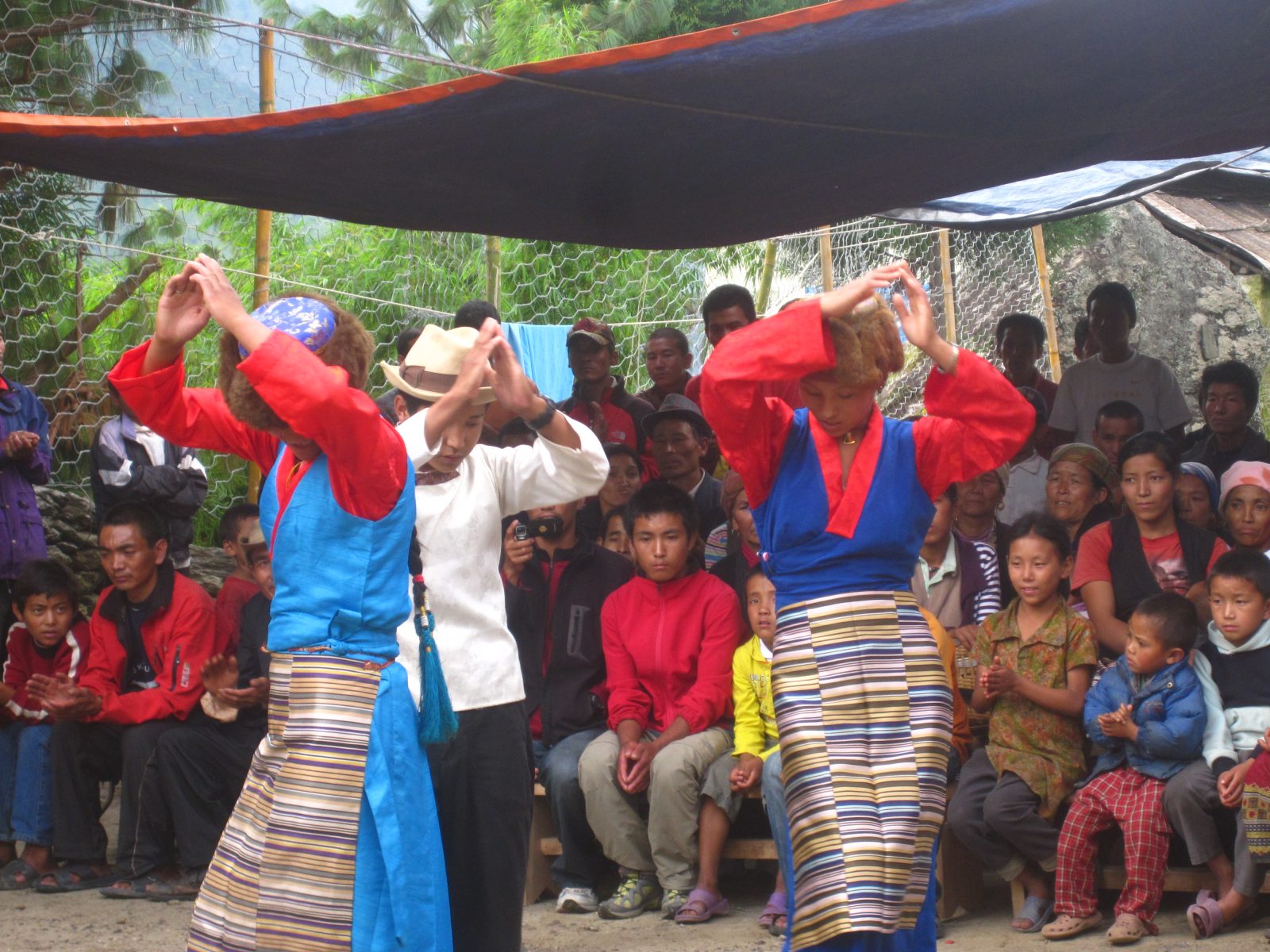
Happy New Year Nepal!
Although our calendar, the Gregorian calendar, is recognised in Nepal they also have others which are also used so it's currently the...
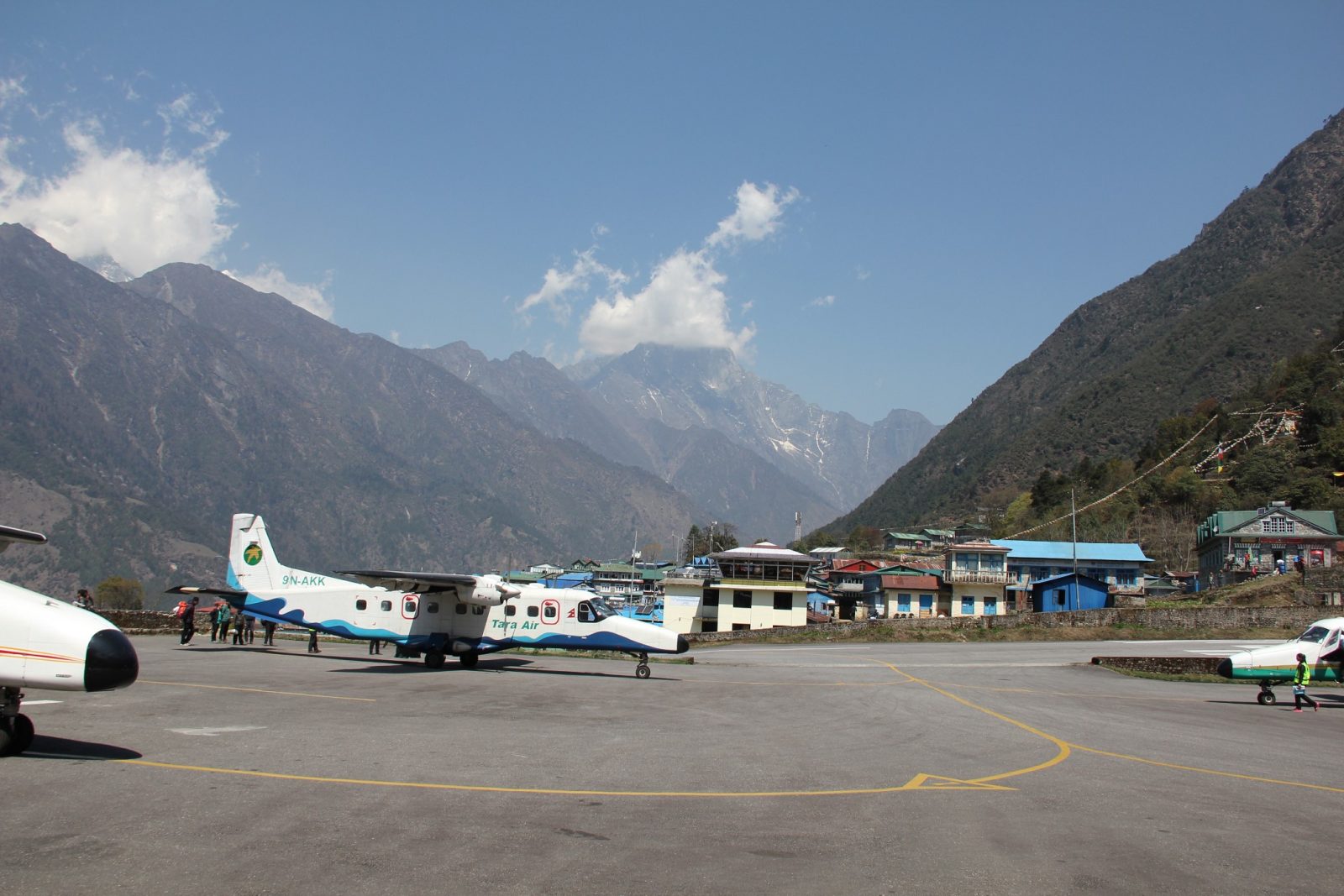
The Road to Everest
It used to be that the quickest way to get to Everest Base Camp was to fly into Lukla airport. Now all that is about to change with the building of...
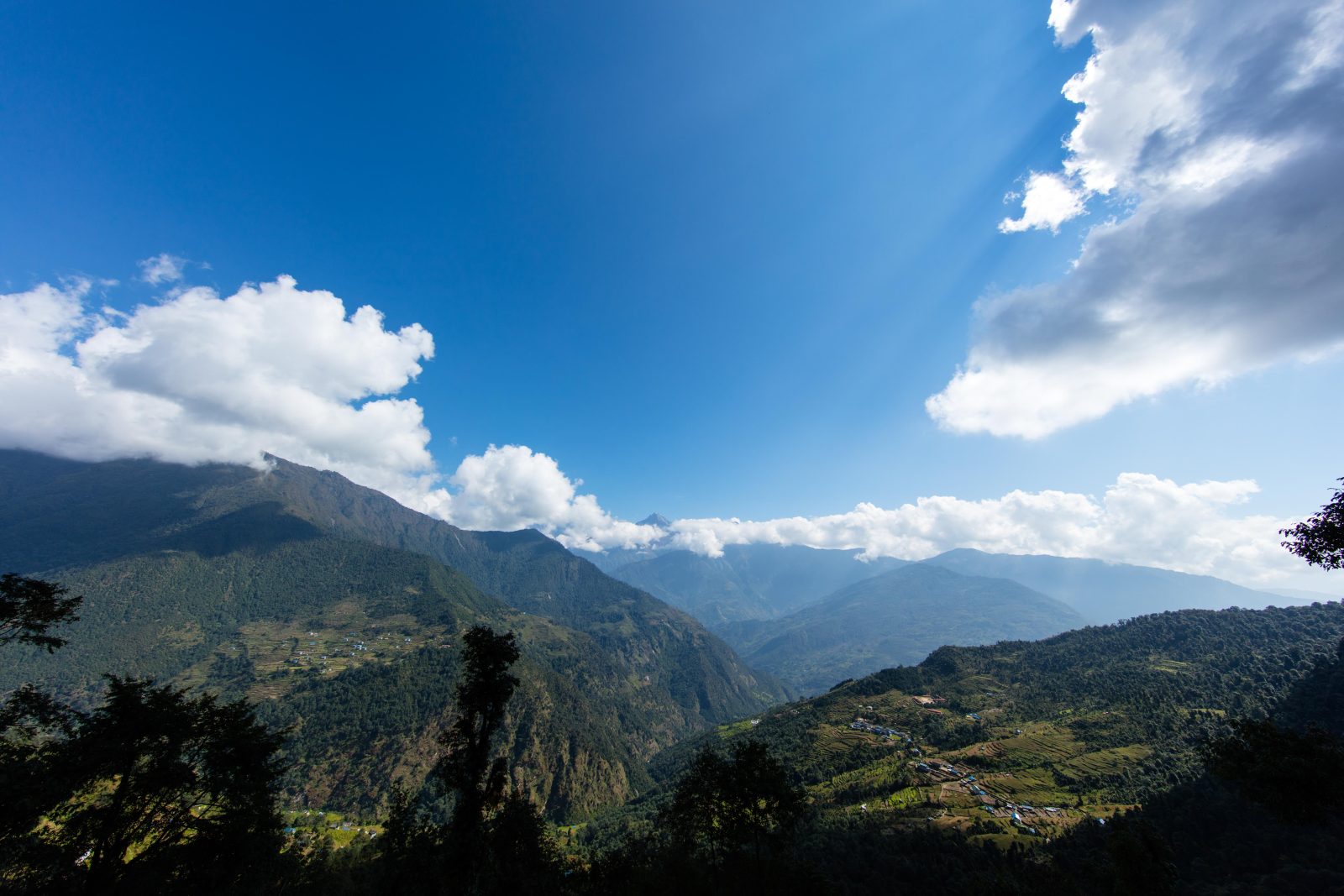
Trekking With Children in Nepal
There are no rules or laws that restrict children trekking in Nepal and it is the perfect place to combine stunning scenery with an incredible...
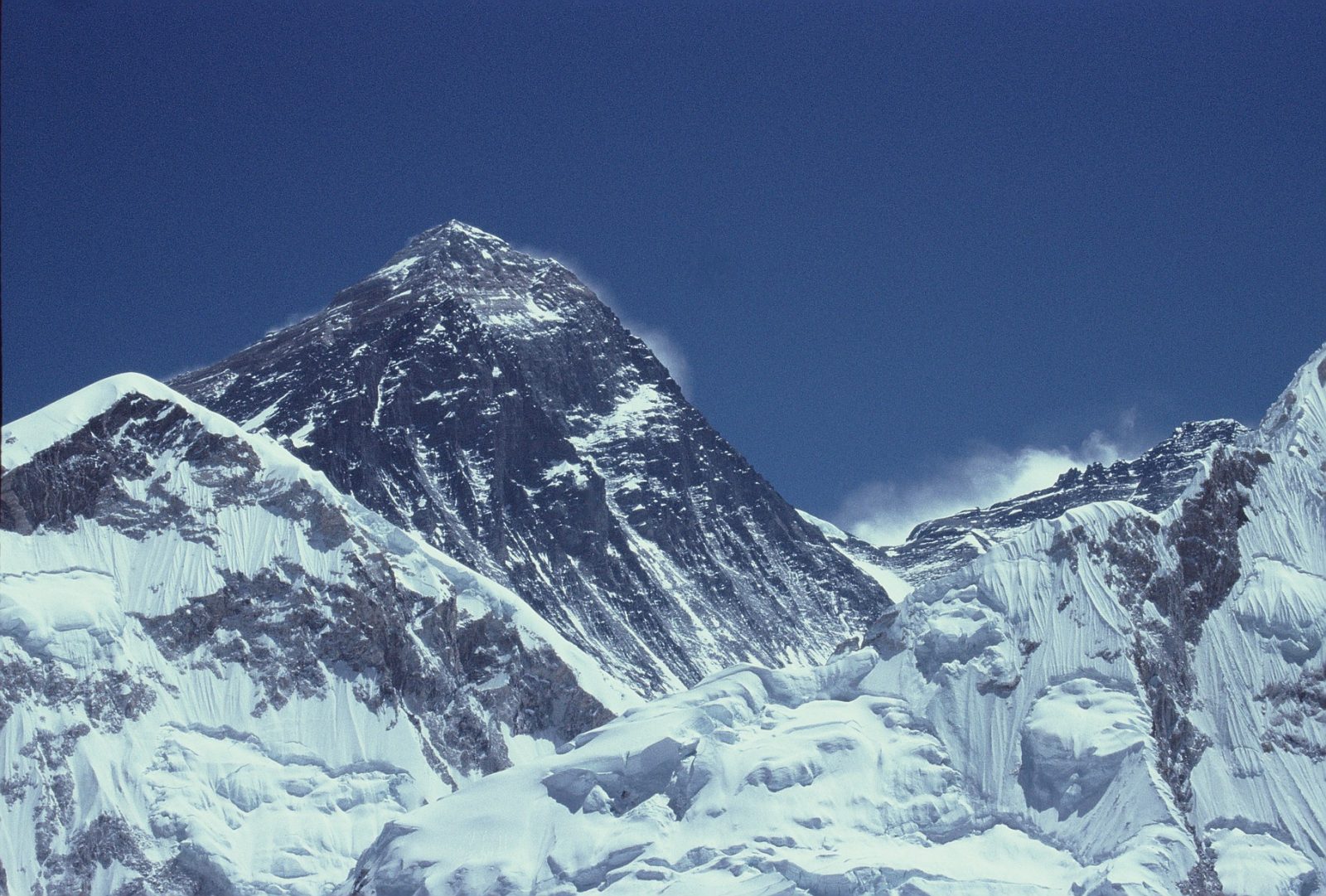
Faking Mount Everest?
An interesting story has come about towards the end of this years season on Mount Everest concerning the claim from an Indian climber that his...

How Hard is it to Trek to Everest Base camp?
A trek to Everest base camp is a very realistic opportunity for most people who enjoy the outdoors and have a good level of fitness and...
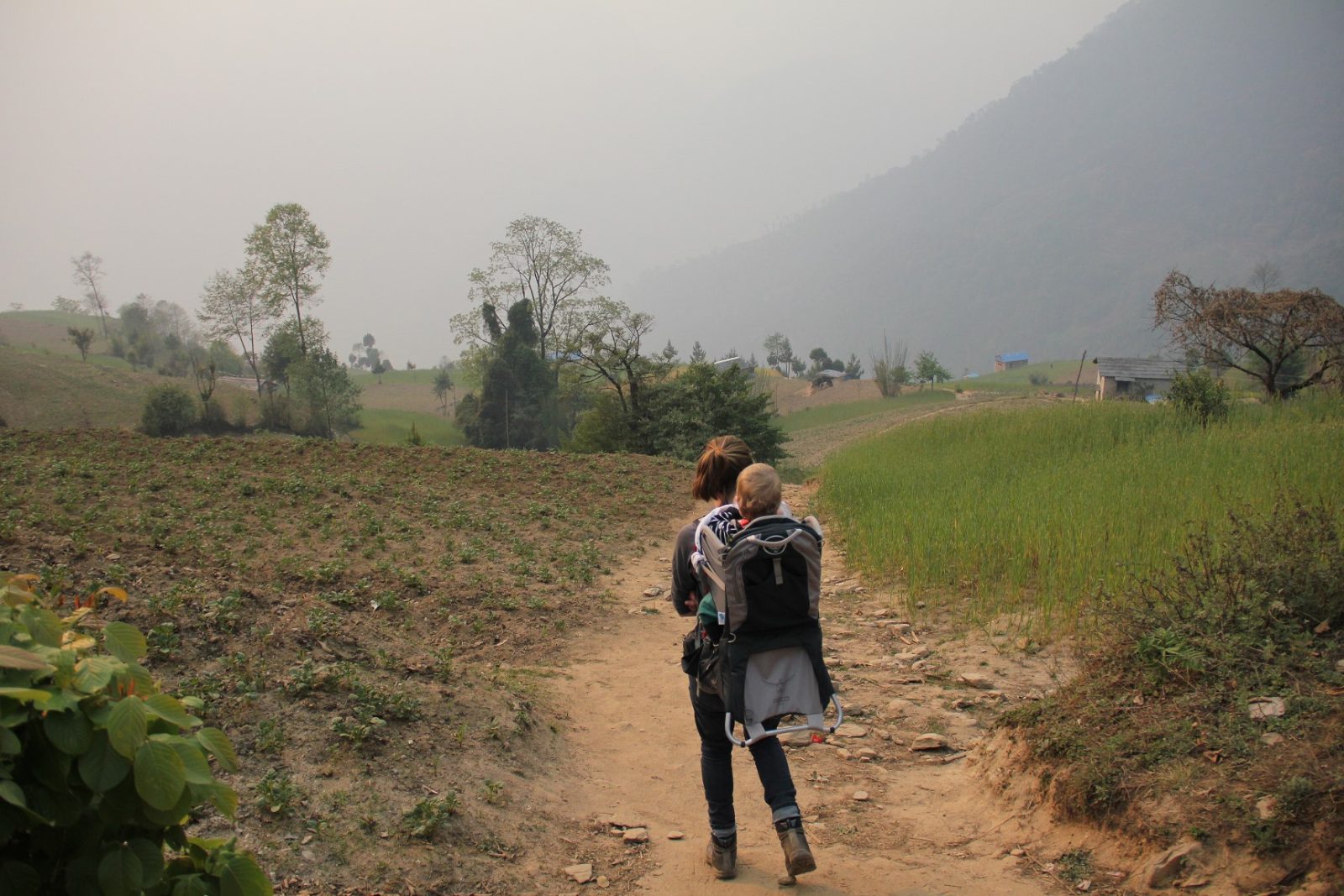
Trekking With Young Children in Nepal
I remember a friend saying he was looking forward to when his children were six or seven years old so that they could go travelling as a family to...

